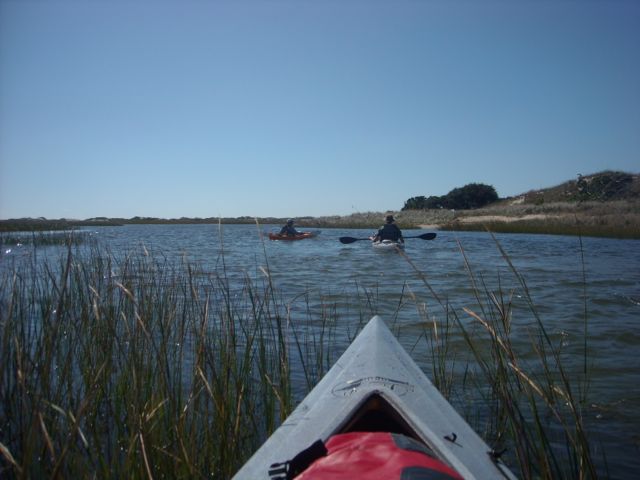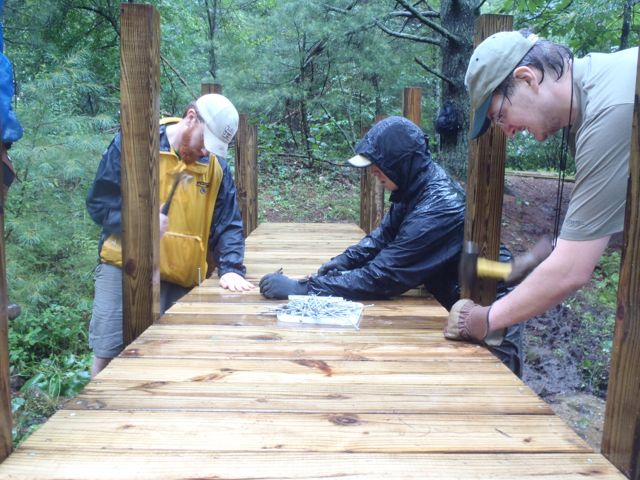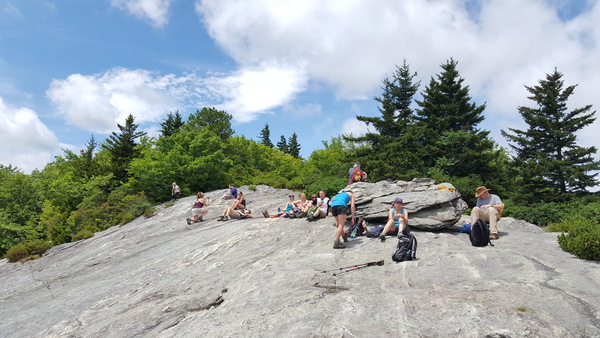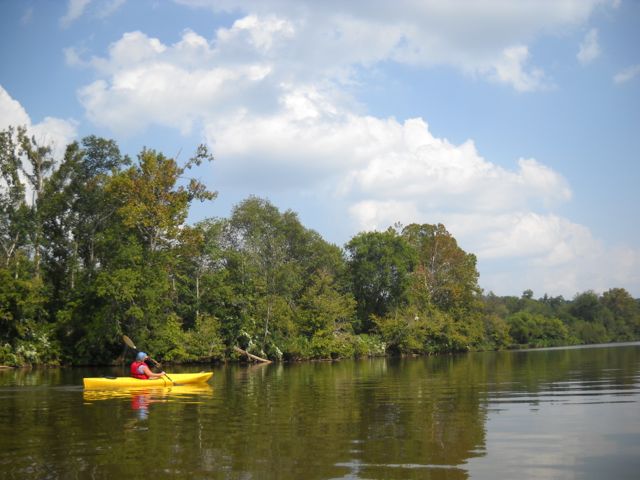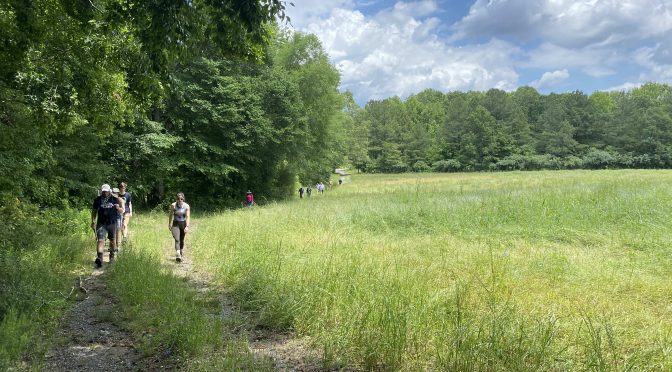Culturally speaking, this is the last weekend of spring. True, the season doesn’t officially cede to summer until June 21 (at 5:13 a.m.). But for most of us, Memorial Day weekend kicks off “Those Lazy-Hazy-Crazy Days of Summer;” starting this weekend the majority of us will already be dipping into the soda, the pretzels, the beer (no hot dogs?).
Category Archives: Hiking
A busy first Saturday in June
If you’re not doing anything a week from Saturday … it’s nobody’s fault but your own.
A week from Saturday, June 4, the first Saturday in June, is National Trails Day. As it’s been since its inception in 1993, it’s a day set side for us to celebrate our nation’s trails at NTD-designated events, of which there are 368 nationwide.
GetHiking! Summer 2022
Summer’s too hot for hiking?
Poppycock!
It’s simply a matter of where to go, when to go and how to prepare. Our summer hikes include morning and evening hikes to beat the heat, and a Weekend Summer Escape series that includes three memorable weekends of hiking on high country sections of the statewide Mountains-to-Sea Trail.
GetOut! 5 Adventures for a Steamy Weekend
The first hot weekend of the year is upon us, with temperatures climbing into the mid 90s. As far as weekend adventure goes, that can only mean one thing: water play. That influences our 5 Adventures for this Weekend.
- Canoe Hike, Saturday, 10 a.m., Jones Lake State Park, Eizabethtown. Jones Lake, that 224-acre Carolina bay southeast of Fayetteville, begs for attention on a hot day. Take the guided paddle trip, then spend the rest of the day on the beach, enjoying the clean, tannic waters of the lake. A perfect summer adventure. Learn more and register — the paddle is free, but space is limited — here.
- Canoe Hike, Saturday, 5 p.m., Carvers Creek State Park, Spring Lake. Says the event description: “We will be learning the basics of canoeing and then trying out our new skills by maneuvering through the Cypress swamp. This is a slow and calm canoeing experience and great for beginners or if you want to get a closer look at the Cypress trees.” Again, free, but space is limited and you must register in advance. Learn more here.
- Stone Mountain Stream Safari, Saturday, 4 p.m., Stone Mountain State Park, Roaring Gap. Even better than being on the water? Being in it, which you’ll be on this 1/2-mile hike in a park stream learning about bugs that live in water and water quality. Learn more here.
- Jordan Lake Bald Eagle Paddle, Saturday, 8:30 a.m., Jordan Lake State Recreation Area, Apex. Seeing bald eagles is cool, even more so when you realize, according to outfitter Frog Hollow Outdoors, the “re-introduction of Bald Eagles has been one of our states shining legacies as a true environmental comeback. Due to DDT use in the 70s Bald Eagles had completely disappeared from NC by the early 80s. However, the year following the release of juveniles in Eastern NC, a nesting pair found their home near Jordan Lake. Since that time in 1984, the population of Bald Eagle in NC has soared. Jordan Lake is now considered one of the largest summertime nesting areas for Bald Eagle in the southeastern US. Join us as we paddle the northern reaches of Jordan Lake in search of its majestic residents.” Passage is in sea touring kayaks, eagle sighting is not guaranteed. $55. Learn more and sign up here.
- Stargazing paddle, Saturday, 8 p.m., Saxapahaw Lake, Saxapahaw. Says outfitter Haw River Canoe & Kayak, “There is no better way to see the night sky in Central North Carolina than on a dark night with a new moon, while floating on Saxapahaw Lake. Guests will paddle out to the middle of the lake, and adjust their eyes to the night sky. As the stars become brighter, guests will ‘raft-up,’ lay back, and identify stars and constellations. Single kayaks, tandem kayaks, and canoes are available for use. Suitable for all skill levels.” $40-$80, depending upon the boat. Learn more here.
This weekend, tolerate the heat by embracing water.
Guide to Summer Hiking (and why you should!)
Usually it’s mid-June before we’re forced to address the issue of summer heat. Before, that is, we’re forced to issue our annual plea to stay on the trail during the summer months ahead.
In some parts of the U.S. — the Northeast, the Pacific Coast, the mountain states — hikers live for the summer and its warm days. Not here, where Summer is equated with still air, sticky clothes and sweat-stung eyes.
